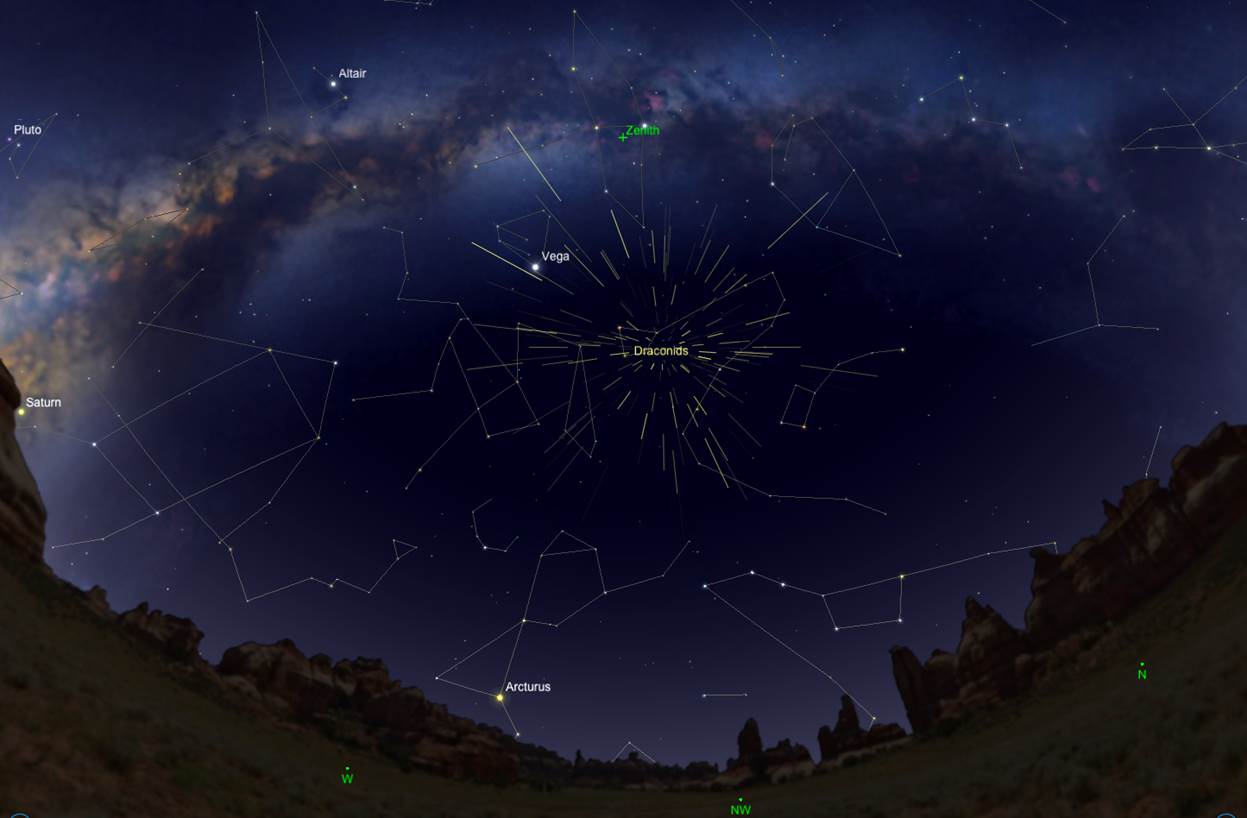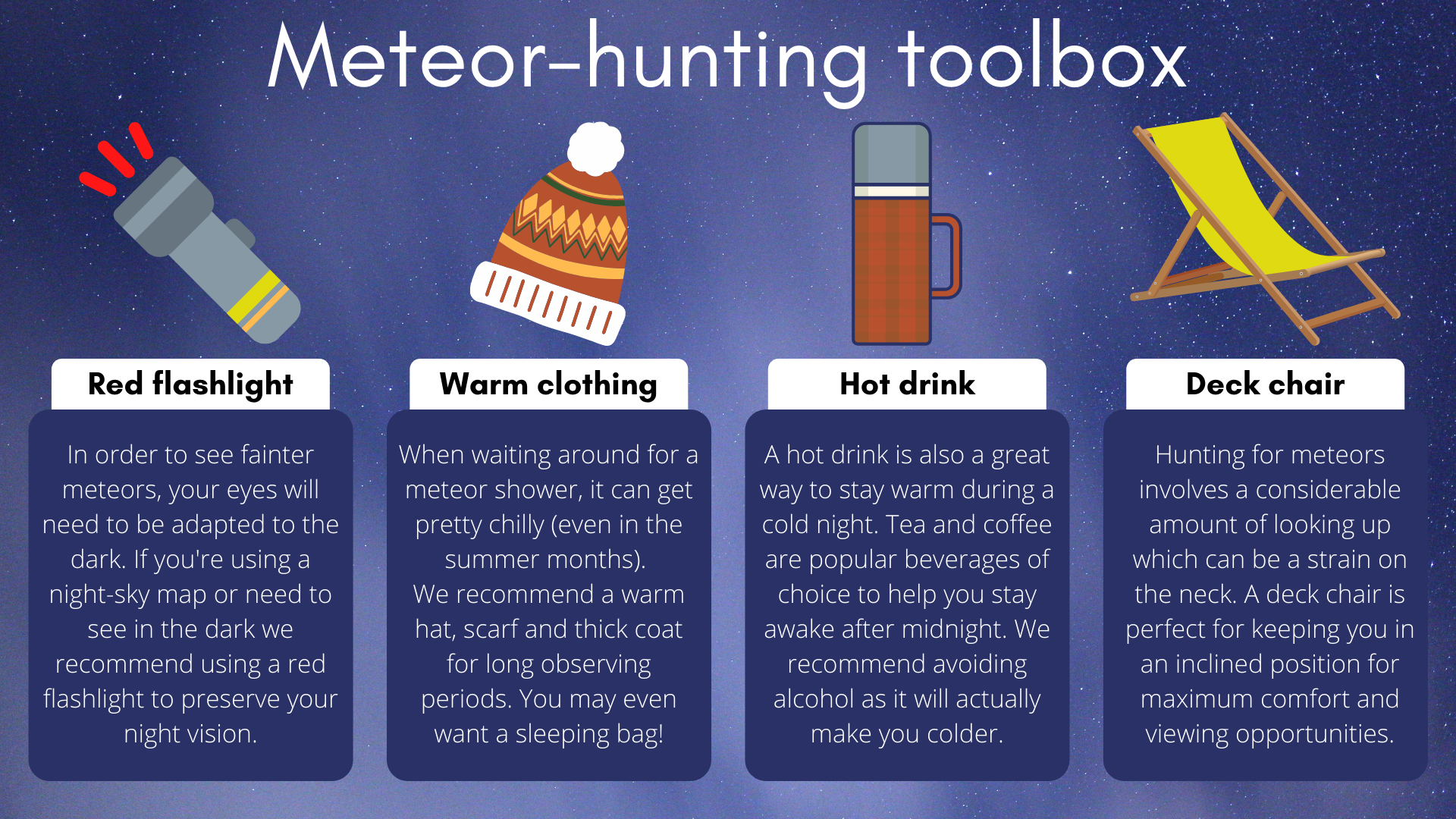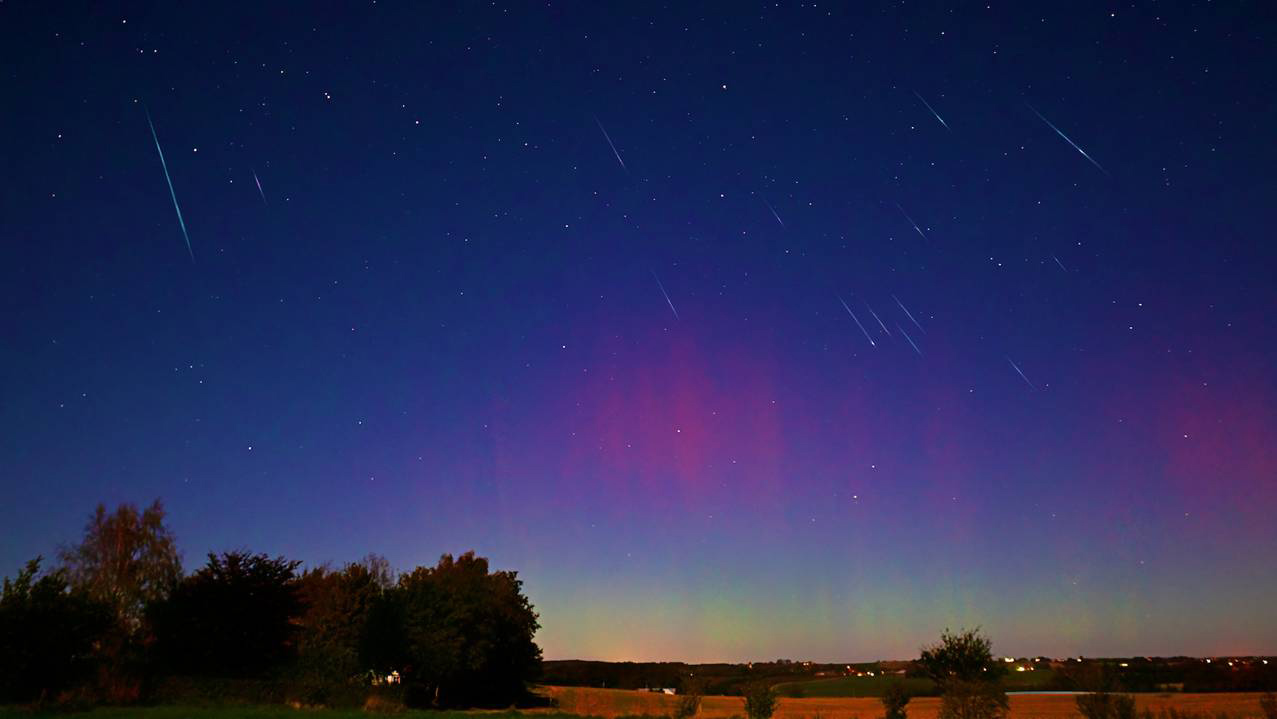Draconid meteor shower 2025: When, where & how to see it
The Draconids have staged some dramatic outbursts in the past.
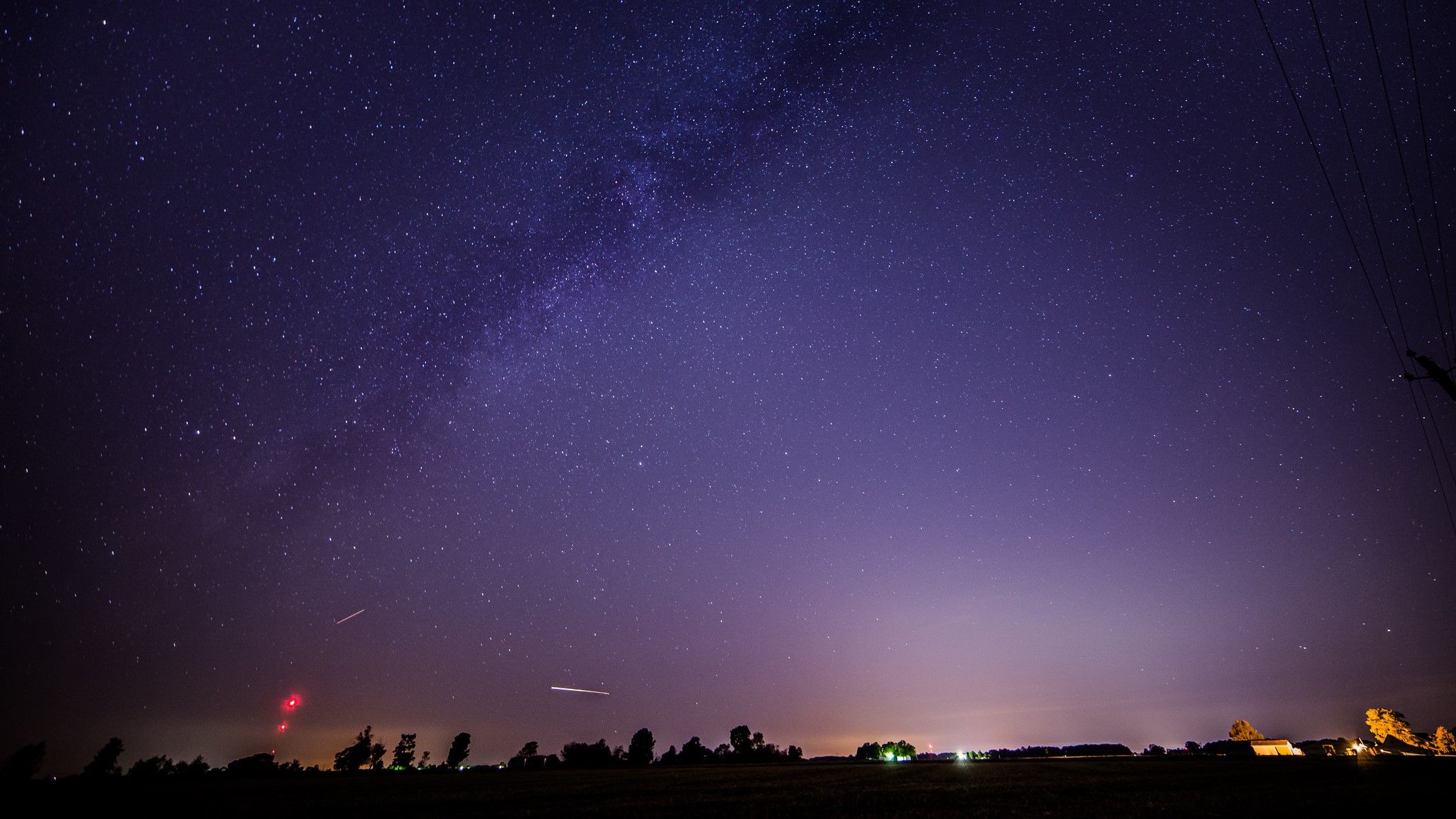
The Draconid meteor shower, active annually from Oct. 6 to Oct. 10, is set to peak on Oct. 8, 2025. However, stargazers may face challenges this year due to poor viewing conditions. A full moon on October 6/7 will flood the night sky with light, making it harder to see the faint meteors.
The Draconids occur when Earth travels through a trail of debris left by Comet 21P/Giacobini-Zinner. This comet, composed of ice and rocky fragments, orbits the sun every 6.6 years. As Earth encounters this debris, the particles burn up in our atmosphere, creating the meteor shower.
Comet 21P/Giacobini-Zinner last reached its closest point to the sun, known as perihelion, on September 10, 2018, at 2:40 a.m. EDT (0640 GMT), just a few minutes after making its closest approach to Earth.
In recent years, the Draconids have been relatively quiet, producing few meteors and no notable outbursts of activity — a far cry from the showers of old, when the Draconids produced some of the most impressive meteor showers of the 20th Century in 1933 and 1946. During these meteor storms, thousands of meteors were spotted every hour, according to the U.K. meteor network.
Outbursts like those, and lesser ones in 1926, 1952, 1985, 1998 and 2011, seem "to occur only when the Earth passes just inside Comet Giacobini-Zinner's orbit shortly after the comet itself has gone by," wrote Space.com skywatching columnist Joe Rao.
The Draconids are sometimes called the Giacobinids, after French astronomer Michel Giacobini who discovered the comet 21 P/Giacobini-Zinner, according to Royal Museums Greenwich.
Where can you see the Draconid meteor shower?
Meteor showers are named after the constellation from which the meteors appear to emanate. From Earth's perspective, the Draconids appear to come approximately from the direction of the constellation Draco, the dragon.
Breaking space news, the latest updates on rocket launches, skywatching events and more!
Despite its size and designation as the eighth-largest constellation, Draco is not especially conspicuous. The name is derived from the Latin term "draco," meaning "huge serpent," and the constellation snakes its way through the northern sky.
Right ascension: 17 hours
Declination: 65 degrees
Visible between: latitudes 90 and minus 15 degrees
To best see the Draconids meteor shower, go to the darkest possible location, lean back and relax. You don't need any equipment like telescopes or binoculars; the secret is to take in as much sky as possible and allow about 30 minutes for your eyes to adjust to the dark.
If you want more advice on how to photograph the Draconids, check out our how to photograph meteors and meteor showers guide and if you need imaging gear, consider our best cameras for astrophotography and best lenses for astrophotography.
When is the best time to view the Draconid meteor shower?
The best time to look for the Draconids is in the evening, after nightfall during the shower peak around Oct 8, when the shower's radiant — the Draco constellation — is highest in the sky.
Although peak viewing days are typically your best shot to see the sky filled with bright streaking meteors, you may still be able to catch the occasional Draconid between Oct. 6 and Oct. 10.
What causes the Draconid meteor shower?
This all-or-nothing shower is caused by the comet P/Giacobini-Zinner. The comet was discovered on Dec. 20, 1900, by Giacobini at the Nice Observatory in France. And later observed by Ernst Zinner on Oct. 23, 1913, according to NASA Science.
The little comet measures just 1.24 miles (2 kilometers) in diameter and takes about 6.6 years to orbit the sun.
Each time the "dirty snowball" returns to the inner solar system its nucleus sheds ice and rock into space into a vast debris stream. When Earth passes through the debris the "comet crumbs" heat up as they enter Earth's atmosphere and burn up in bright bursts of light, streaking a vivid path across the sky.
Additional information
Learn more about comet 21P/Giacobini-Zinner with the comet observing website comet watch. Explore the Draconids in more detail and see if they'll be visible from your location with timeanddate.
Editor's note: If you snap an amazing photo of a Draconid meteor or any other night-sky sight and you'd like to share it with Space.com for a story or image gallery, send images, comments and location information spacephotos@space.com.
Bibliography
Bailey, D. 2022 draconid meteor shower. UK Meteor Network. Retrieved Oct. 3, 2022, from https://ukmeteornetwork.co.uk/showers/2022-draconids
Draconid meteor shower 2022: When and where to see it in the UK. Royal Museums Greenwich. Retrieved Oct. 3, 2022, from https://www.rmg.co.uk/stories/topics/draconid-meteor-shower-2022-when-where-see-it-uk
NASA. (2019, Dec. 19). 21P/Giacobini-Zinner. NASA. Retrieved Oct. 3, 2022, from https://solarsystem.nasa.gov/asteroids-comets-and-meteors/comets/21p-giacobini-zinner
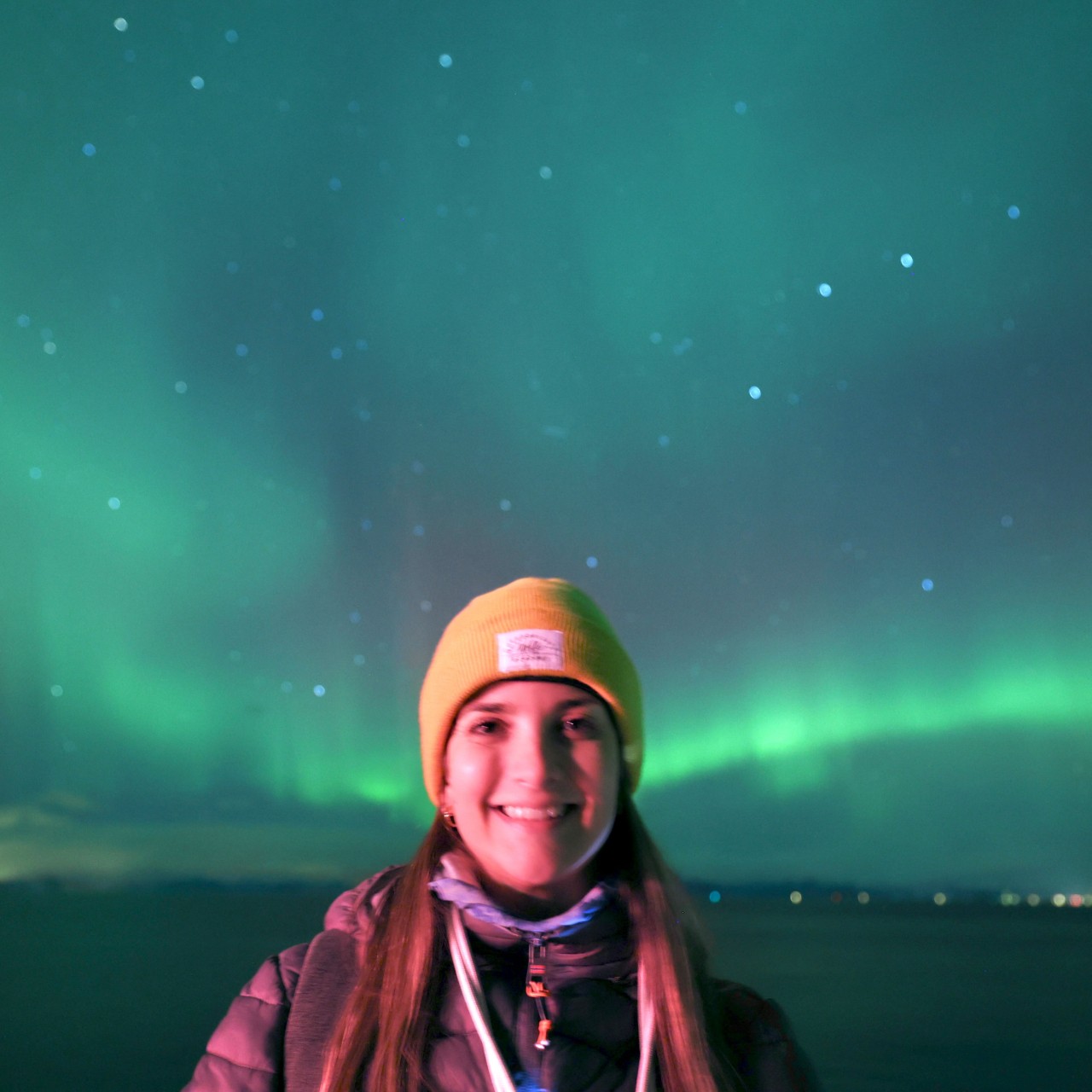
Daisy Dobrijevic joined Space.com in February 2022 having previously worked for our sister publication All About Space magazine as a staff writer. Before joining us, Daisy completed an editorial internship with the BBC Sky at Night Magazine and worked at the National Space Centre in Leicester, U.K., where she enjoyed communicating space science to the public. In 2021, Daisy completed a PhD in plant physiology and also holds a Master's in Environmental Science, she is currently based in Nottingham, U.K. Daisy is passionate about all things space, with a penchant for solar activity and space weather. She has a strong interest in astrotourism and loves nothing more than a good northern lights chase!
